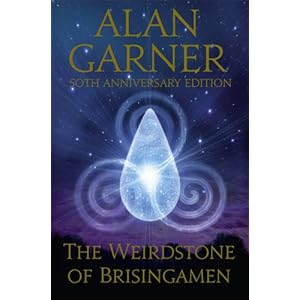Learning to adapt
 At inkle, we balance our time between big projects, and quick fun things we want to try out, so this week we made a quick demo showing how we could adapt a book (we pulled out by Alan Garner's classic fantasy The Weirdstone of Brisingamen) into our inklebook format.
At inkle, we balance our time between big projects, and quick fun things we want to try out, so this week we made a quick demo showing how we could adapt a book (we pulled out by Alan Garner's classic fantasy The Weirdstone of Brisingamen) into our inklebook format.
The questions were: would it work? How easy was it to do? How close could we stay to the original text, without compromising the interactivity? How much fun is the result?
The demo story is pretty short - just a few scenes, from near the start of the novel, in which the two protagonists Colin and Susan arrive in the wonderful setting of Alderley Edge, and the first seeds are laid of the magical things that go on there. And obviously, we can't release it! But it was a great experiment, and one I'd love to repeat on a larger scale.
<!--more-->A well-written interactive adaptation of a story can be a thing of beauty. It can immerse your reader, bring the characters and the world to life. Interacting with a story can produce a real sense of risk and reward as obstacles are encountered and overcome; or a real sense of joy and grief as friends are met and lost.
But the difficulty with making stories interactive is the need for mechanics. (I've never heard a great definition of a game mechanic, but essentially, mechanics are things for the player to do, that the player can work on, or fiddle with, and eventually get done with.)
A lot of video-game adaptations of books or movies tend to pick a couple of mechanics - kill the monsters, or fetch the thing - and then just put cut-scenes around them to try and make it feel like a story. It's a bit of a kludge: even in the very best narrative videogames (Half-Life, Uncharted...), it still feels pretty when the computer-controlled goons turn up just to be dodged around or shot at...
inklebooks, however, aren't videogames. They aren't really that much like videogames. They're interactive in a completely different way. They still have mechanics, but the mechanics are nice, general ones, like "talking", "exploring", "discovering", "deciding". They don't really feel like mechanics when you're reading.
When you're writing, of course, you do kind of have to think about them like that. It's part of the craft of writing.
The process is a lot like adapting a book into a screenplay. That's a process of finding scenes, and working out what kind of scenes they are. Close-up conversations? Walk-and-talk? Tracking shots? Action sequences? Car-chases? Fight scenes? Love scenes? Writers and directors are inventing new kinds of cinematic scene all the time, but one thing's for certain - it doesn't happen by accident.
To write a good film script, you have to know how it's going to play. The same is true for a good inklebook. For instance, maybe the scene is a conversation. But is it a discussion, an exposition, an interrogation? Is the protagonist trying to learn something, or is it the reader who needs to be informed? Is this a chance for the reader to suck up to another character, or take them down a peg or two? What's at the heart of the scene? In the language of story-telling theory, what does it turn on?
We want to tell new stories, things that couldn't ever be anything except interactive. We want to open new places inside reader's heads. But we'd also love to use the inklebook technology to produce fresh, engaging adaptations of classic stories. We don't want to replace books, but when there are some books you love so much, don't you want to go back into them once again, in a new and fresh way?
(I should add, Frankenstein is an adaptation as well, of course, but Dave and Jamie are taking things in a slightly different direction...)